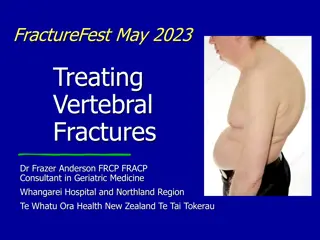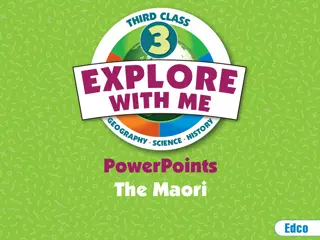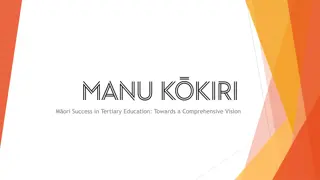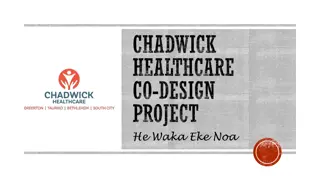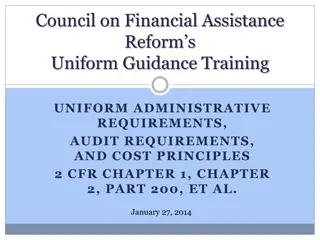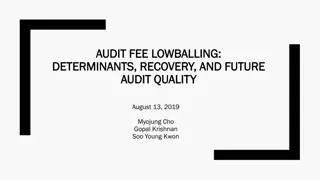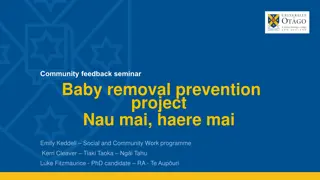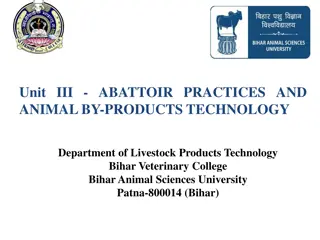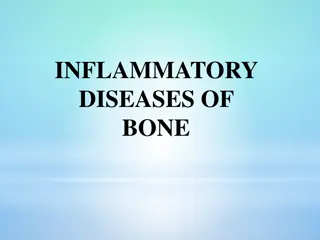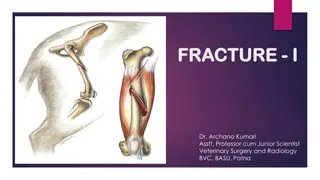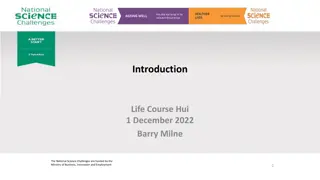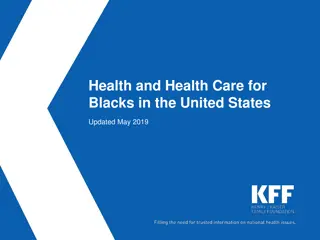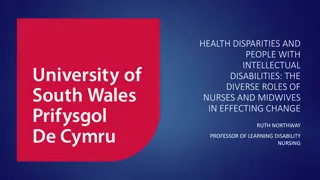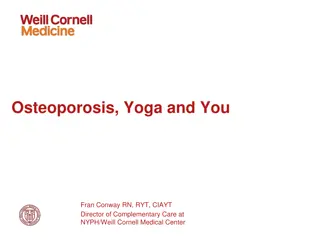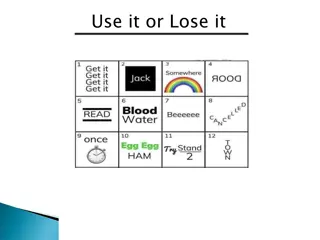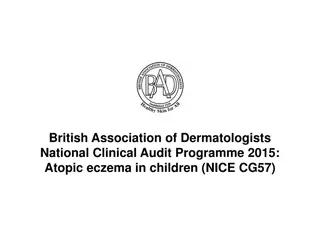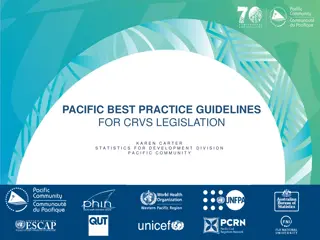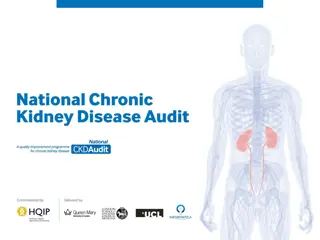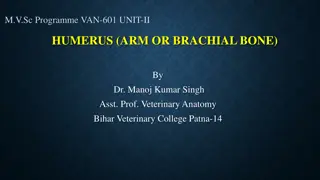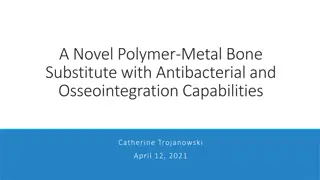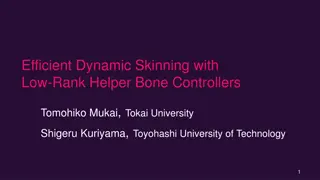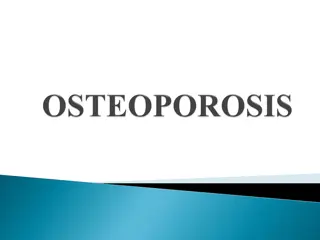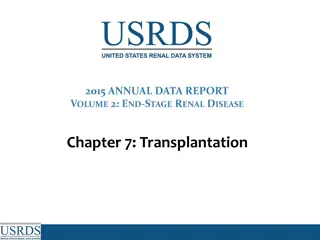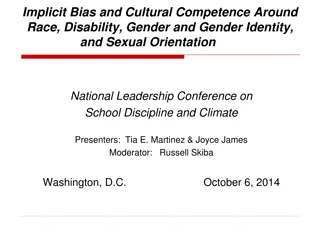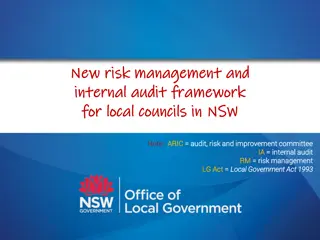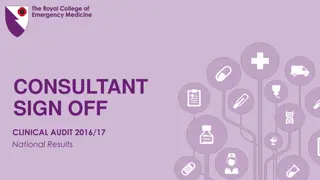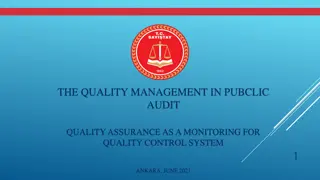Audit on Bone Health Disparities Among Maori/Pacific Patients in CMH
This audit conducted from May 2022 to January 2023 in CMH focuses on evaluating potential inequity gaps in fragility fracture care between Maori/Pacific and non-Maori populations. It aims to assess the prevalence of fragility fractures and osteoporosis, referral rates for bone scans and treatments, participation in strength programs, intervention outcomes, and barriers to access. Additionally, it explores health equity in achieving parity in care quality and outcomes across populations.
Download Presentation

Please find below an Image/Link to download the presentation.
The content on the website is provided AS IS for your information and personal use only. It may not be sold, licensed, or shared on other websites without obtaining consent from the author. Download presentation by click this link. If you encounter any issues during the download, it is possible that the publisher has removed the file from their server.
E N D
Presentation Transcript
Bone health of Maori/Pacific patients (CMH) ANZFFR audit May 2022- January 2023 Sunita Paul Priya Singh Amy Joseph Rashika Chandra
Osteoporosis and Fragility Fracture (FF) Osteoporosis is porous bones and results in fragility fractures. Fragility fracture are fractures resulting from low trauma such as fall from a standing height * Hip fractures are the most serious FF Secondary fracture prevention is crucial to reduce future FF
*ANZ Fragility Fracture Registry (ANZFFR) *ANZFFR: Joint venture between Australia and New Zealand Live in April 2022 in New Zealand Identify, Investigate, Inform, Intervene, Integrate and Quality of FLS performance Started entry into the registry in May 2022 1200 patients from May 2022 to current *Aims: *CMH: *Total :
Aim of Audit Audit from May 2022 to January 2023 CMH Fracture Liaison Service( FLS) aims to identify: The potential inequity gaps among Maori and Pacific fragility fracture sufferers in comparison to the non-Maori population. The prevalence of fragility fractures and osteoporosis among Maori and Pacific in CMH. Number of Maori and Pacific referred for bone density scan, recommended treatment compared to Non-Maori/Pacific. Number of Maori and Pacific referred to the Strength and Balance Programme. Outcomes of interventions Barriers to access Access to falls and fracture prevention, bone density scan, and treatment.
Health Equity Achieving the same level of health across all populations through fair and responsive resource allocation access to quality of care and health outcomes. VS Health Equality Defined as even allocation and distribution of health and health resources. Health equality assumes that providing everyone with the same opportunity and resources will result in equal outcomes. (Te Whatu Ora, 2023)
Population in CM Data provided from David Xu, CMDHB Comparison between patients and pop2023 for all ages 40% 34% 35% 32% 30% 28% 27% 23% 25% 22% 20% 17% 17% 15% 10% 5% 0% Asian Maaori Pacific Other % of patients % of pop2023
CM Population with FF aged 50 and over Comparison between patients and pop2023 for aged 50 and over 50% 47% 47% 45% 40% 35% 30% 26% *CM population with FF aged 50 & 25% 22% 20% 20% 17% 15% 12% 11% 10% over 5% 0% Asian Maaori Pacific Other % of patients % of pop2023
Hip Fracture incidence by age, gender and ethnicity (Brown ET AL., 2007) Annual Female hip fracture incidence between 2003-05 by age band Annual Male hip fracture incidence between 2003-05 by age band and ethnicity (per 10,000) and ethnicity (per 10,000) * * Age Group European Maori Pacific Asian Age Group European Maori Pacific Asian * 50-54 * 1.58 1.19 0.64 1.06 50-54 1.99 1.39 1.28 1.53 * * 55-59 3.28 2.15 3.31 2.19 55-59 3.95 3.05 1.72 0.00 * * 60-64 7.18 5.81 4.55 3.85 60-64 4.39 7.14 3.61 0.84 * * 65-69 12.11 8.18 2.90 9.62 65-69 8.11 8.39 10.34 5.94 * * 70-74 27.76 14.02 20.83 20.29 70-74 15.52 12.09 21.05 9.38 * * 75-79 65.43 39.06 34.38 44.74 75-79 35.73 22.92 13.64 25.00 * 80-84 132.80 84.85 70.59 109.52 * 80-84 82.30 60.00 33.33 50.00 * 85-89 242.44 153.33 150.00 150.00 * 85-89 158.21 66.67 66.67 100.00 * 90+ 359.16 200.00 100.00 250.00 * 90+ 264.12 100.00 * 33.33
Osteoporotic fractures by gender, age group and fracture site (PAUL ET AL., 2007) Total projected osteoporotic fracture incidence in 2007 * Men 50 54 TOTAL * Hip 29 1106 * Vertebra 1687 10405 * Other 2513 20406 * TOTAL 4229 31917 * Women 50 54 TOTAL * Hip 17 2697 * Vertebra 865 17590 * Other 2059 32151 * TOTAL 2941 52437 * TOTAL 50 54 TOTAL * Hip 46 3803 * Vertebra 2552 27994 * Other 4572 52556 * TOTAL 7170 84354 55 59 60 64 65 69 70 74 75 79 80 84 85 + 46 45 68 95 173 266 384 1001 953 751 1191 1429 1616 1775 4192 1411 2048 1604 1654 3506 3476 5239 2410 2867 2890 3257 5389 5636 55 59 60 64 65 69 70 74 75 79 80 84 85 + 41 62 103 179 382 624 1289 888 1304 1458 2128 3140 2693 5114 2486 2101 2727 2780 4557 4759 10681 3415 3467 4288 5086 8079 8077 17084 55 59 60 64 65 69 70 74 75 79 80 84 85 + 87 107 171 274 555 890 1673 1890 2258 2209 3319 4569 4309 6889 6678 3512 4775 4384 6212 8266 14157 8654 5877 7155 7977 11336 13465 22720
Common Types of Fractures in *Spine *Ankle *Hips *Wrist *Ribs *Humerus *Pelvis *Tibial Plateau 33 24 15 15 13 08 02 02 CM
Total number of FF May 2022-Jan 2023 Total Patients:997 Maori/Pacific: 119(12%) Non Maori/Pacific: 878 (88%) Maori: Pacific: 61 (51%) 58 (49%)
Prevalence Difference in Gender with FF Non-Maori with FF Female Male 878 Maori/Pacific FF Female Male 119 634 72% 78 66% 244 28% 41 34%
*DEXA order vs Done Treatment recommended vs Started Maori/Pacific Non Maori/Pacific Total 119 69 27 39% 43 Total 876 410 171 41% 283 DXA ordered DXA done DXA ordered DXA done Treatment Recommended Treatment Started Treatment Recommended Treatment Started 19 44.2% 184 65%
Possible reasons for treatment not started Maori / Pacific Non Maori/pacific *2.5% *1.8% *3.9% *1% *8 *3 *0 Still A/W GP to start Impaired renal function Declined (0.34%) Deceased DNA Still A/W GP to start Impaired renal function Declined (2.5%) Deceased *1 DNA *3 *5
*Mortality appears almost 3x in Maori/Pacific patients compared to Non Maori patients
* Reason for treatment not starting in the Maori/Pacific Population AGE GENDER Tx Recom Tx started Reason Comment Client is assessed as PHLOC now. GP has disucssed IV ZOLE with the daughter who has declined as not wanting further treatment The patient declined after discussing with GP that she does not want to commence Bisphosphonate therapy The patient declined treatment as she is planning to return to the island and does not wish to commence on treatment. The patient declined treatment despite multiple discussions in the hospital and FLS as he does not wish to commence the treatment for bone protection 86 Female YES No Patient Declined 89 Femlae YES No Patient Declined 82 Male YES No Patient declined 81 Male YES NO Patient Declined 86 Female YES No Patient Declined Family and patient opted for Cholecalciferol only and declined any other treatment. Follow up on Tx recommended. GP has not commenced. Age Gender Phone follow up on 30/ 05/ 2022 Outcome 77 Female Uncontactable Follow up letter sent to GP and the patient 78 Female Uncontactble Follow up letter sent to GP and the patient 79 82 Female Male Uncontactable Uncontactable Follow up letter sent to GP and the patient 76 Female Patient contacted Follow up letter sent to GP and the patient 85 Female Patient contacted Follow up letter sent to GP and the patient 81 Male Patient contacted and needs to speak to the daughter
* Sub-Analysis of ankle fractures among Maori/Pacific patients
* REFERRED * 1% Maori/Pacific patients * 2% Non Maori TO STRENGTH AND BALANCE
No inequity identified from FLS point of view. HOWEVER Underlying issues of patients Increased Co morbidities Contra-indications to treatment Renal impairment High mortality in Maori Pacific group * Potential Inequity Identified
Transportation Family support Parking Mobility Health Literacy Language barrier (while booking for appointments) Funding (Denosumab) * Access Barriers for DXA scans and treatment
Income impacting on affordability Health literacy Covid 19 Support Other comorbidities Some impacts of Social Determinants, burden of illness, treatment and capacity issues on accessing appropriate care
Areas to improve * Simply providing the information is not sufficient. Create Conversation that is PCCC, culturally safe, PSDM and MDM Collaborate care with patients and Whanau. Tailored/Personalised to individual Understand and address patient workload (burden of illness, treatment and life) and capacity Reduce Waitlist Community GP services require more education to be able to identify and intervene. Accurate data entry into the registry
References Compston, J. (2004). Osteoporosis. In D. A. Warrell, E. J. Benz, T. M. Cox & J. D. Firth (Eds.), Oxford Textbook of Medicine (4th Edition ed., Vol. 3). Brown, P., McNeill, R., Radwan, E., & Willingale, J. (2007). The burden of osteoporosis in New Zealand 2007-2020. Centre for Health Services Research and Policy. Te Whatu ora. (2023). A fair system priorities equity. Retrieved 1/5/2023. Health Equity (hanz.health.nz) Xu, D. (2023). Senior IT analyst, CMDHB. Chan, W.C. (2023) Population Health Strategy & Investments team. CMDHB
Thank You to everyone who has contributed to this audit CMH FLS team Dr Sunita Paul for her expert advice and guidance Sumitha our manager ACC and Osteoporosis NZ for your support Nicola and Stewart from the ANZFFR FFNNZ


